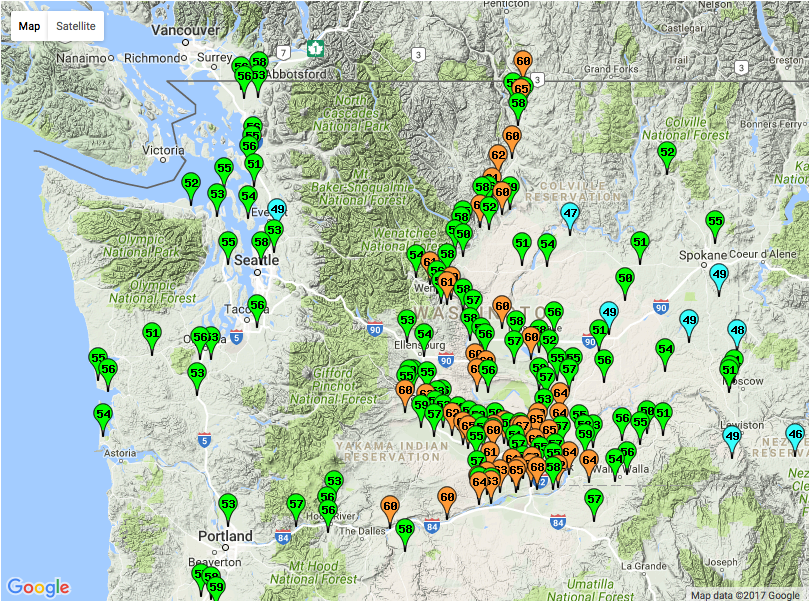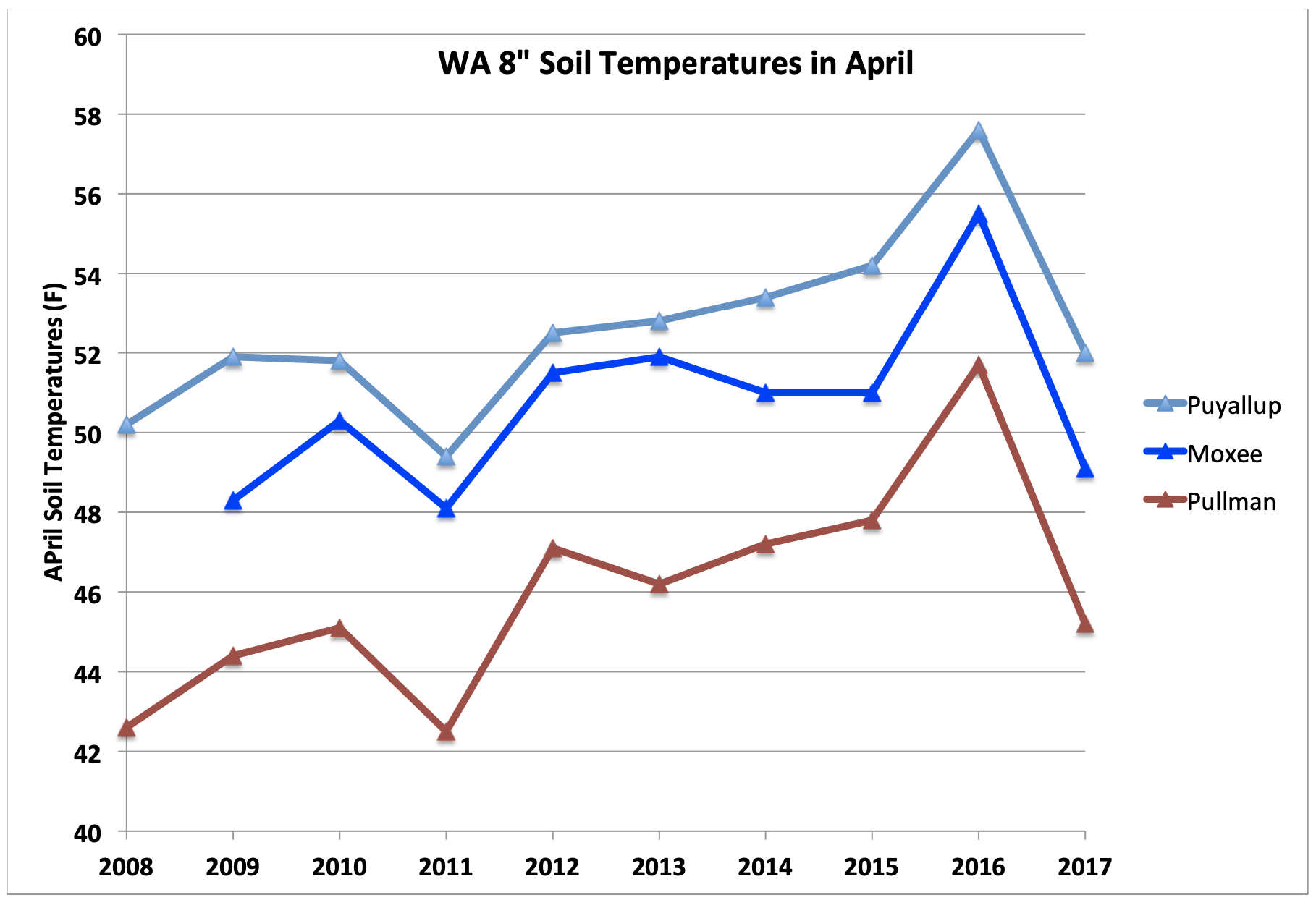Springtime Soil Temperatures in Washington State
One need not be a regular reader of this newsletter to appreciate how cool and wet it has been in WA during the past winter and early spring of 2017 (but hopefully it does not hurt). Many of us have gardens, and supposedly a good way to determine whether it is time to begin planting is to sit on the ground. If your rear end gets cold, it is too early for many vegetables and flowers. We don’t know about the reliability of that method, but we can say that its practitioners would want to be wearing waterproof pants this spring. Has the relatively cold and damp weather caused soil temperatures to be considerably lower than during past years? We thought it might be interesting to take a quick look.
We begin with a map (Fig. 1) showing plotted values of 8” soil temperatures on May 2, 2017 from the impressive website maintained by the AgWeatherNet group of Washington State University (weather.wsu.edu). It is remarkable how many sites include measurements of soil temperature across WA, but then again, this is an important variable for agricultural interests. At any rate, relatively warm temperatures, including some values in the high 60s (°F) are shown in the lower Yakima Valley and in the vicinity of the Tri- Cities. The Okanogan River Valley is also relatively warm; presumably it has been relatively sunny there to warm the soil, since it is a region that experienced plenty of cold last winter.
In order to determine whether the temperatures shown in Figure 1 are unusual, we used the WSU AgWeatherNet to examine the historical record of 8” soil temperature data from a few stations across the state.The time series of April 8” soil temperatures for the years of 2008 through 2017 WSU Puyallup site on the west side of the Cascades, Moxee in the Yakima Valley, and Pullman in the southeast corner of the state are plotted in Figure 2. The close correspondence between these time series is striking. Presumably it is due to soil temperatures reflecting the integrated effects of the prior weather over periods of weeks to a couple of months; weather anomalies on these time scales typically are of large spatial extent. The time series of April soil temperatures shown in Figure 2 indicate that 2017 was cooler than the years of 2012 through 2016, but for the most part warmer, than the years spanning 2008 through 2011. We do not know if the earlier or the later period (before 2017) is more typical, but we suspect the later period is abnormally warm.
Do the cooler soil temperatures at the current time portend anything for the future weather of WA state? The short answer is probably not to any meaningful extent. It has been shown that soil temperatures definitely respond to atmospheric conditions, but there is generally not enough “thermal inertia” in the near-surface layer to influence air temperatures significantly on monthly and longer time scales. Soil moisture can be a different story, but perhaps that is a topic for a later piece. While gardeners might want to hold off a bit longer than usual before planting tomatoes, present conditions do not stack the deck towards a continuation of our cool weather through the remainder of spring.

